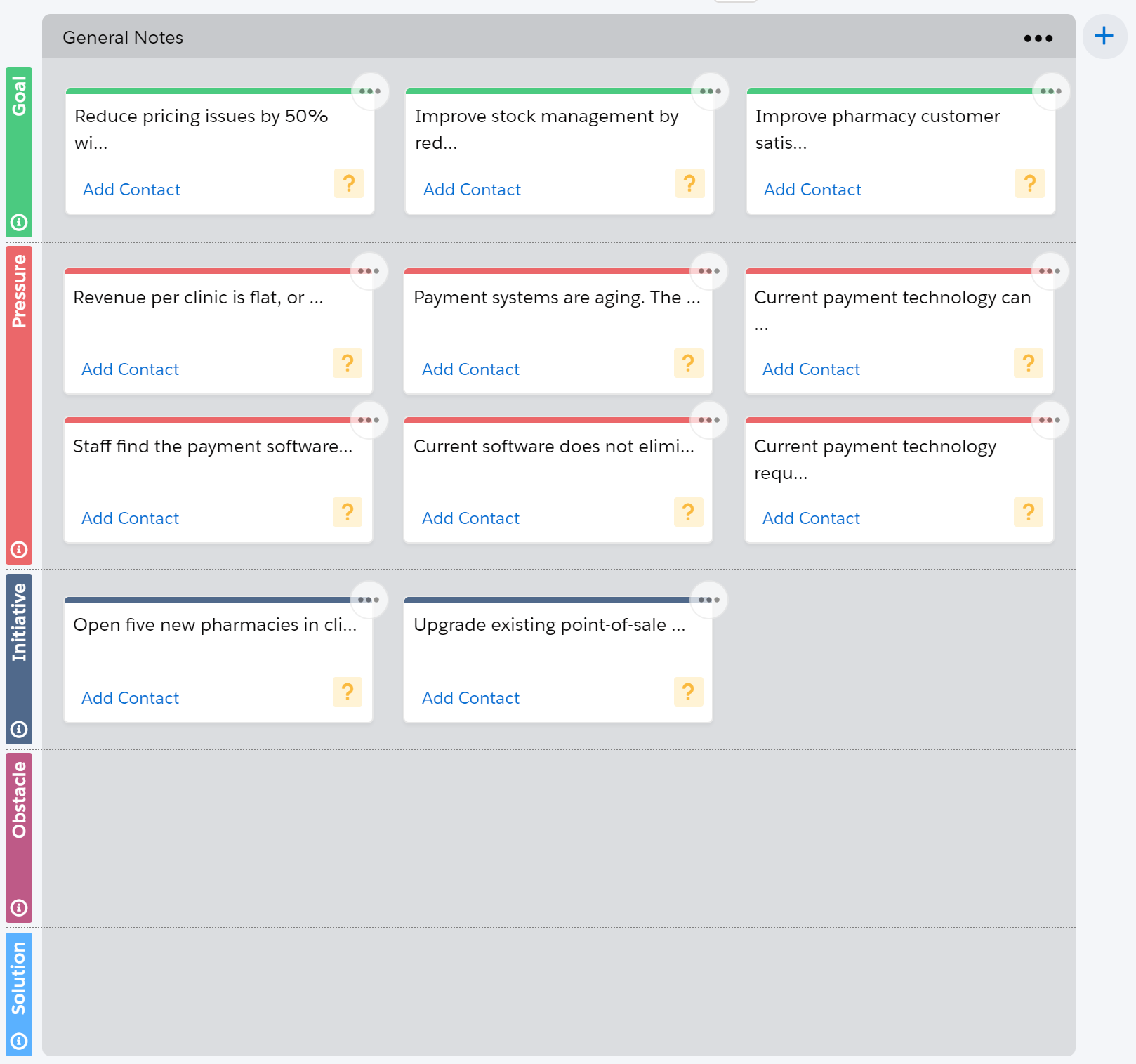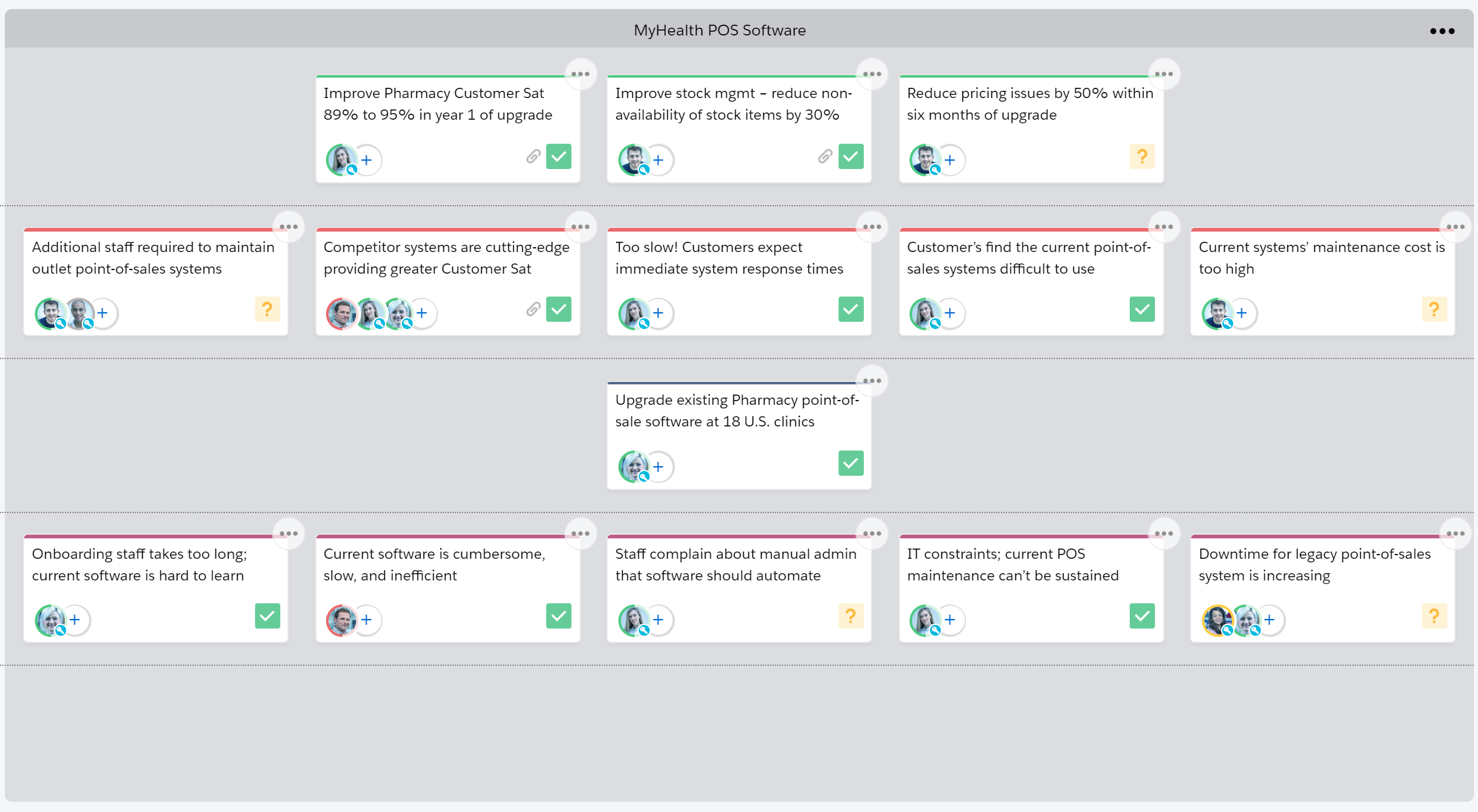Organizing the Insight Map
Learning Objectives
After completing this unit, you'll be able to:
- Create sections to organize the insight map
- Duplicate cards across sections
- Organize your customer's goals, pressures, initiatives, and obstacles
- Connect solutions to specific obstacles or initiatives
Let's return to our account executive, Lynn Benfield.

She's worked with her revenue team to gather their collective ideas and knowledge on the
As yet, the board is fairly unstructured. This is perfectly fine. It's more important for Lynn to capture everything relevant and then look at what she's got to work with.

Lynn and her team discuss the board. They want to see how it can be structured to tell an accurate story about MyHealth's business problems.
Reorganize the Cards
One of the pressures recorded on the board concerns
The team decides that
Lynn changes the card from a pressure to an obstacle by simply dragging it to the obstacles layer.

She then rewords this new obstacle to focus only on staff difficulties with the software, and creates another obstacle that focuses on the drain on IT resources:
- "Staff complain about manual admin that software should automate."
- "IT constraints; current POS maintenance can’t be sustained."
The team agrees that this better reflects the reality at MyHealth.

In a similar way, Lynn will revise other cards she's added to the board and move them to the part of the board that's most appropriate for each one.
Add Sections
Lynn and the team want to give a suitable name to the section of the insight map containing the cards. Lynn clicks the title bar and enters the name — "MyHealth POS Software".
If she wanted to add another section to the board, she could click the + icon in the top right.
Dividing the board into sections is a great way of communicating substories. For example, there could be a substory about what each decision maker cares about. In this example, however, the team decides to stick with one section.

Duplicate Cards
One of the nice features of insight maps is that you can duplicate cards to show the same card in more than one part of the board.
So if you have several sections on the board, the same card can appear in more than one of these sections at the same time. And a change made to one duplicate shows up in all the others straight away.
Lynn and the team don't need to use duplicates on this board, but they're sure to find them useful on other boards.
Organize Cards into Columns
Lynn and the team fine-tune the structure of the board by dragging cards to specific columns.
They might do this to emphasize that some cards are associated with others, which can help the overall flow of the story.

After some further refinement and organizing, the board now looks like this:

Add Solutions
Notice how the team hasn't added any solutions to the board yet.
This is because they understand how important it is to put the customer first. Their focus right now is on becoming experts in MyHealth's business goals and unique business problems.
When they're ready, they'll present the insight map to MyHealth's key players. If the key players verify that it's an accurate reflection of their reality, Lynn and the team will start thinking about the solutions they may be able to offer.

Try It Yourself
In the previous unit, we suggested that you gather initial ideas in the insight map for one of your
- Add sections
- Duplicate cards
- Reorganize cards
- Add solutions
